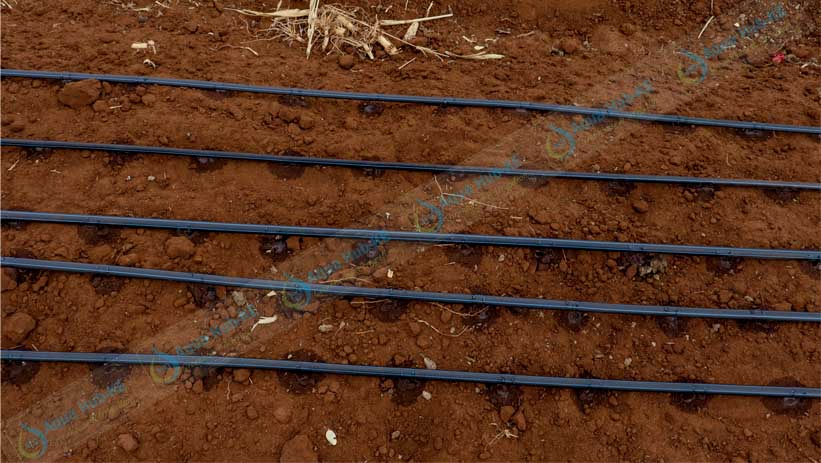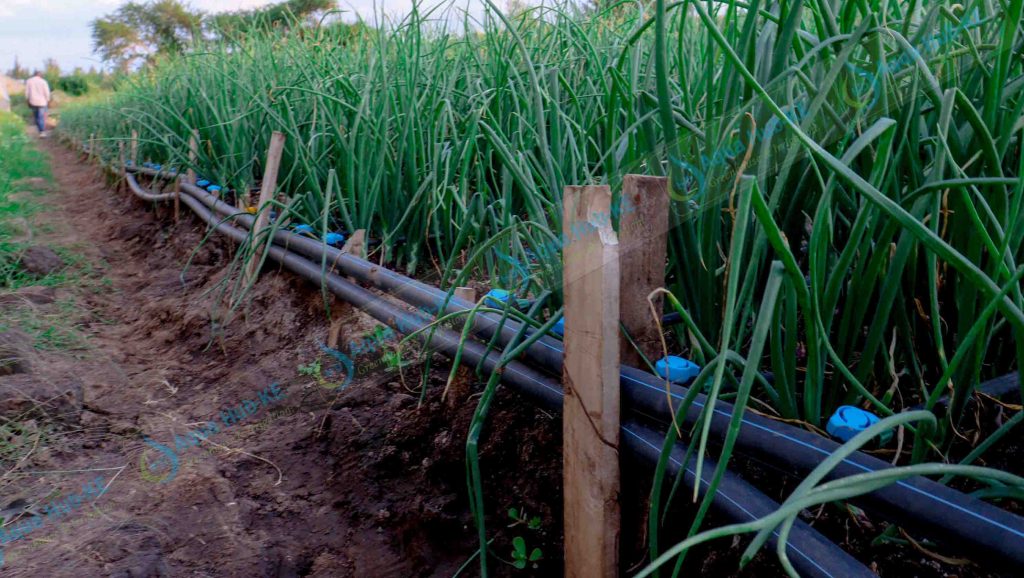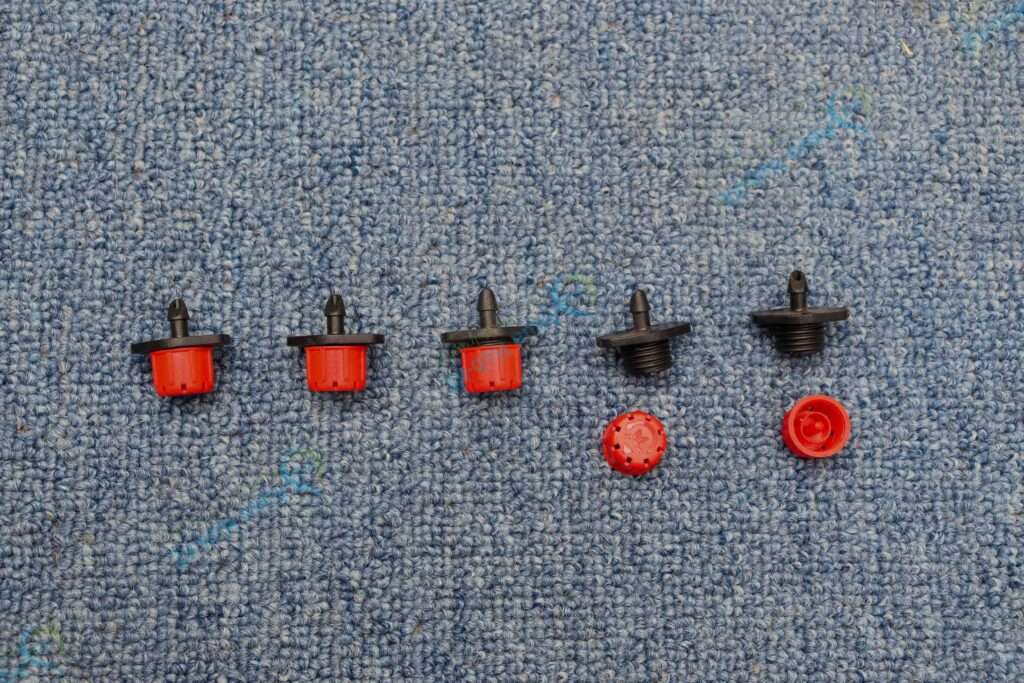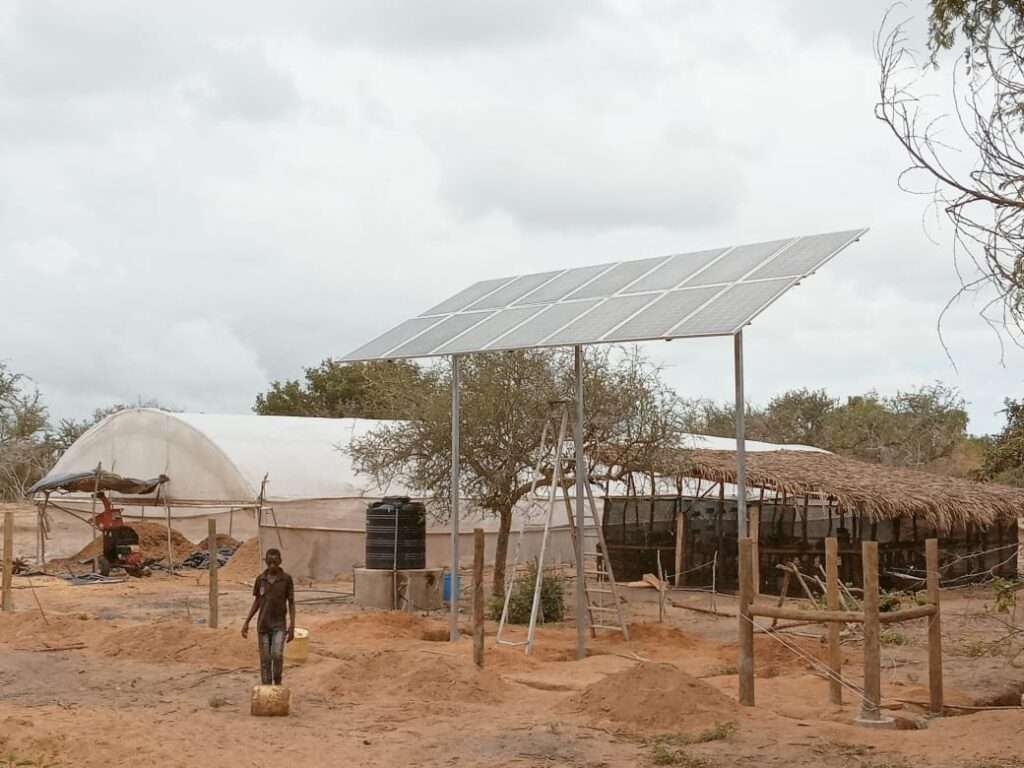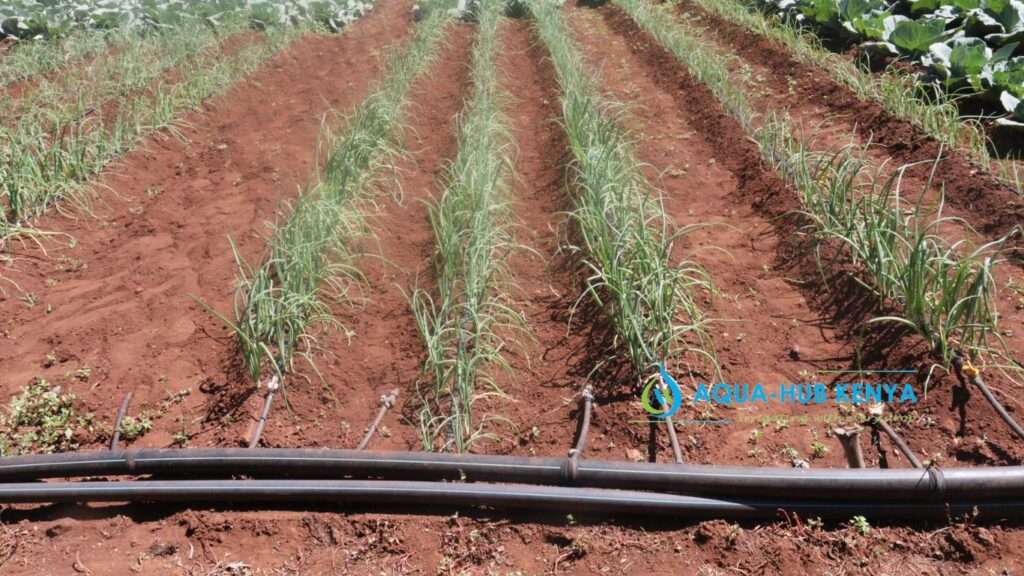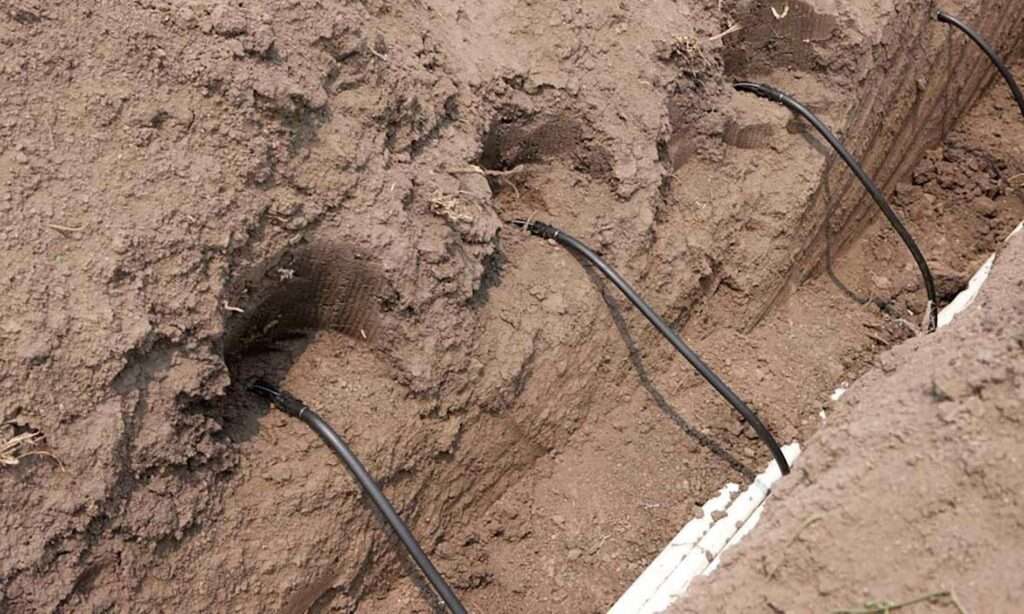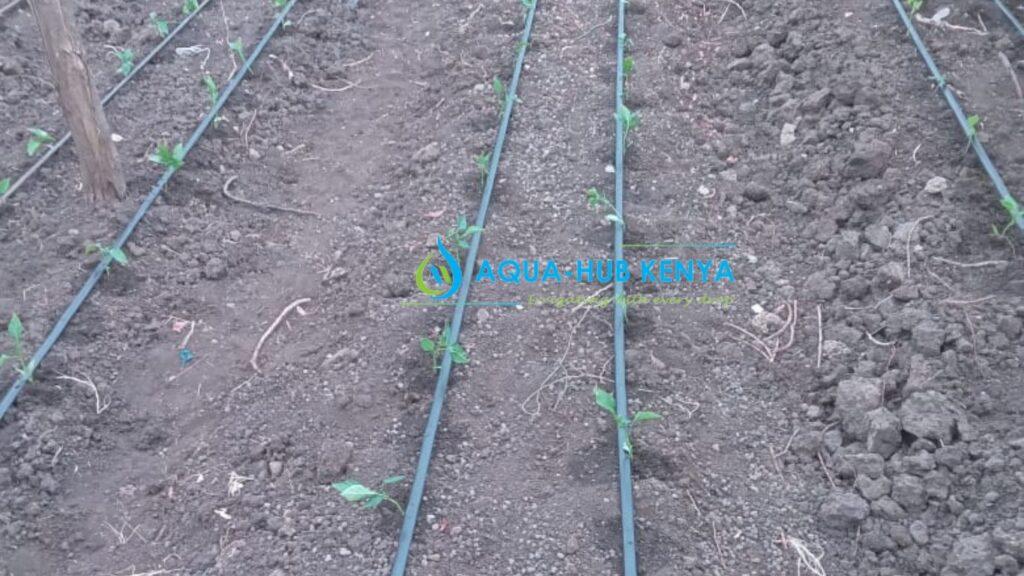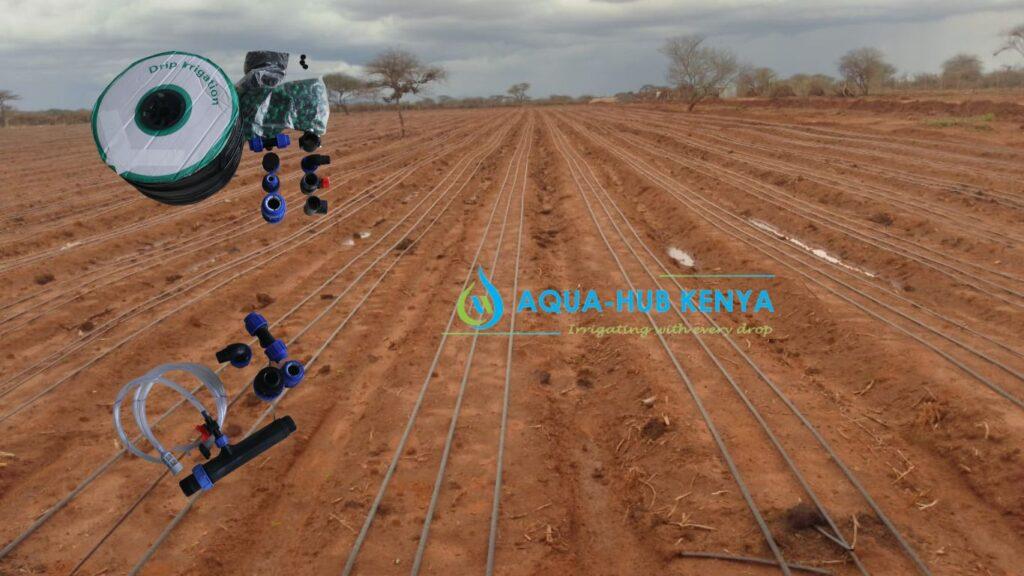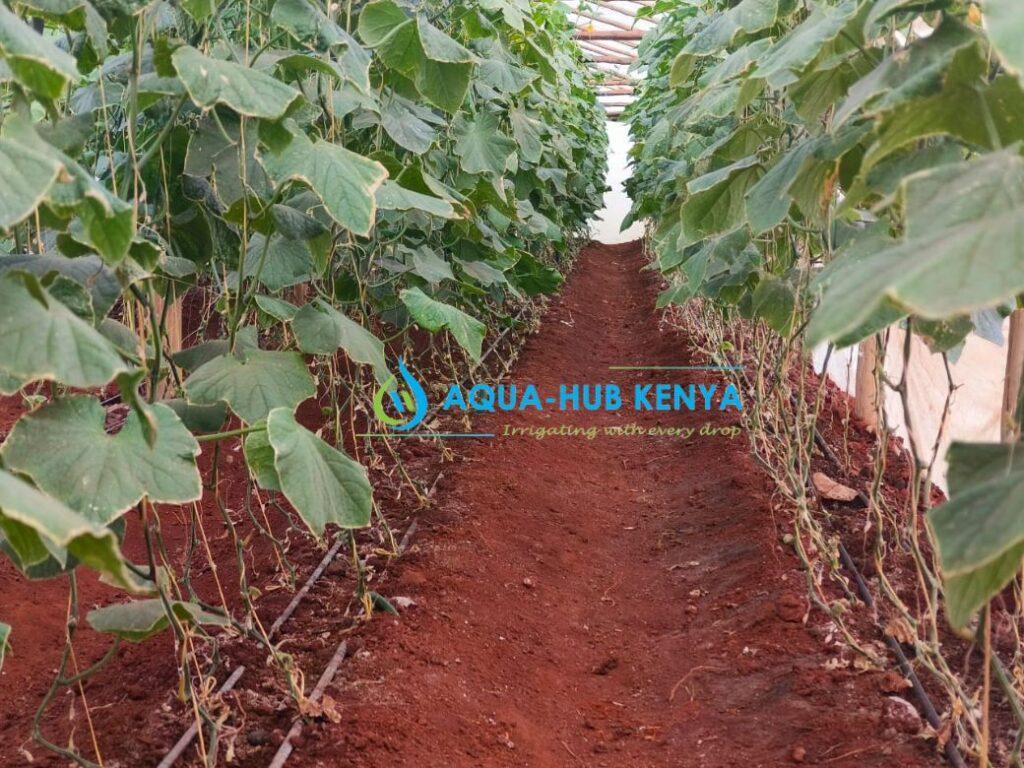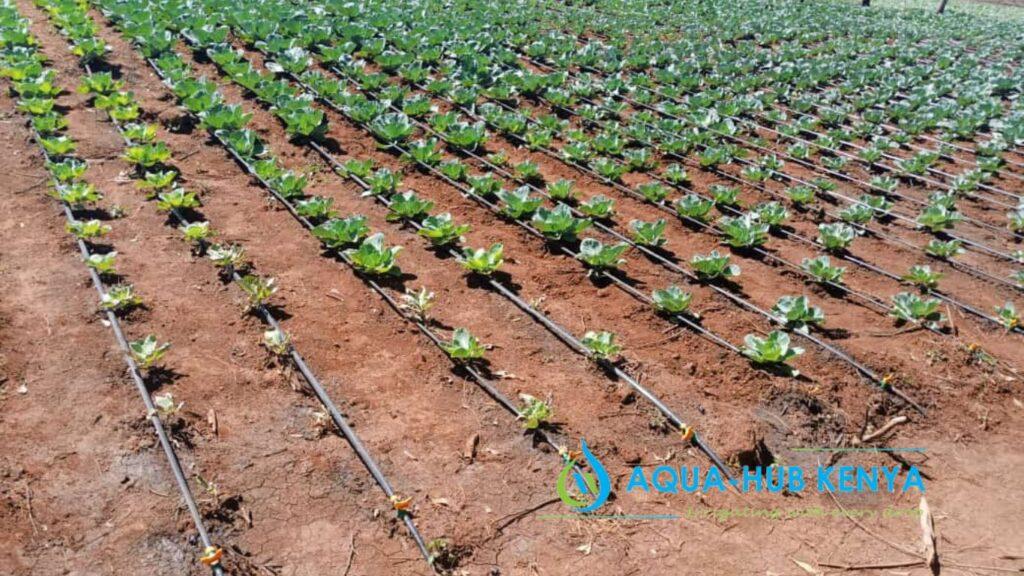Aqua Hub offers quality in their onion drip irrigation systems with ease of installation, use, and maintenance. The cost prices of our irrigation solutions are often within a friendly market rate.
Why Onions You Should Start Growing Onions
Onion cultivation is among the top ventures that have proven lucrative in Kenya in 2024. Due to a shortage in production, there has been a high demand for onion bulbs in the market over the last five years.
Onion Drip Irrigation Systems in Kenya
Onion drip irrigation systems are gaining popularity in Kenya due to their high efficiency in balancing water and fertilizer.
Onions are very sensitive to water stress as it often affects the yield. Excess irrigation of onions can lead to early bulb rot and fungal infections.
Onion Drip Irrigation Systems Price in Kenya
The price of Onion drip irrigation systems in Kenya varies according to dynamics such as the land size and the number of driplines per bed.
The Average cost of Onion Drip irrigation Systems for 1 acre of Land is between KES 80,000 to KES 150,000.
Onion drip irrigation in Kenya
Large-scale Onion farming in Kenya is nowadays done through drip irrigation, which provides control over water and fertilizer use.
It is common in most arid and semi-arid onion-growing areas such as Machakos to experience lower rainfall patterns.
Onion Farming in Kenya – Ecological Requirements
- Topology: A flat land with access to sufficient water for irrigation
- Soil: Light and well-drained loam soils with a PH of 6 – 6.8
- Water: Onions require approximately 500 to 700 mm of water.
- Soil Temperature: 15° – 30 °.
Types of Hybrid Onion Varieties for Kenyan Climate
- Red Bulb onions – Red Pinoy, Red Creole, Bombay Red
- White bulb onions – Texas grano
- Bunching onions – White Lisbon
- Leeks – Italian Giant
How to Improve Soil PH: Facilitate Onion Drip Irrigation Farming
Onions need a pH of 6 to 6.8. If the pH is below 6, apply calcific lime at the rate recommended by your soil test results.
How many onion seeds for 1 Acre?
An acre of land will need about 1kg of seeds.
How to Produce Onions through Drip Irrigation
- Onion production in drip-irrigated fields is done through small farm sections or beds.
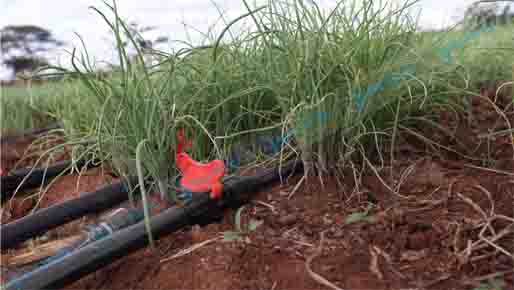
How to Prepare Onion Planting Beds
- Beds are prepared by breaking soil particles loosing and raising them to ease management.
Beds for Onion Drip Irrigation: Accurate Measurement and Spacing
- Beds for onion drip irrigation farming should take 15 cm spacing.
- The length and width of onion beds are 100m and 1 m respectively.
Correct Onion Propagation
- Do not bury the onion seedlings past the neck of the clove (not more than 1 inch deep).
- Once beds are ready, seedlings are transplanted seedlings in rows 15-20cm apart and 8-10cm from one seedling to the other.
How to Start Onion Drip Irrigation Farming
- Assess the market demand and prices of onions to ensure perfect timing on when to plant and harvest.
- Assess the water availability in your farm. If water is a challenge, you can drill a borehole to ensure sufficient water.
- Consult an agronomist to carry out tests on your soil to determine which onion variety is suitable for your farm. Aqua Hub Kenya can help you with that.
- Find quality hybrid onion seedlings from a seedling vendor.
- Prepare your farm by clearing and cultivating it.
- Consult Aqua Hub Kenya for guidance on bed preparation.
- Buy and Have Drip Irrigation Kits installed. Aqua Hub is a reliable supplier and installer of drip irrigation kits.
- Transplant the Onion seedlings to the lines.
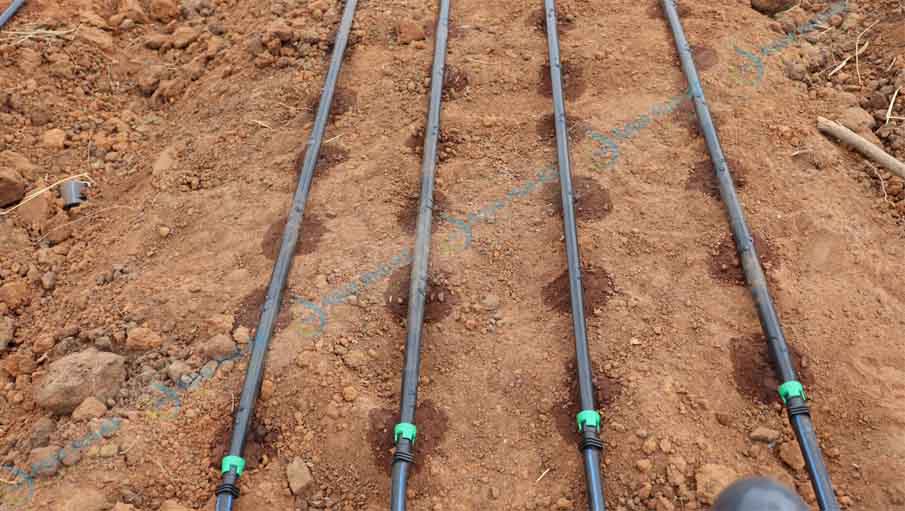
How long does it take to produce Onions through drip Irrigation?
Growing onions through drip irrigation systems can take around 3-5 months depending on the variety of the onions you grow.
| Onion Variety | Production Time | Yield Per Acre (tonnes) |
| Red Pinoy F1 | 90 days | 30 |
| Red Creole | 150 days | 16 |
| Bombay Red | 150 days | 16 |
Best Irrigation Schedule for Onions
The schedule for irrigation of onions in Kenya varies depending on the area’s soil. In Kenya, it is ideal to water your onions early in the morning or late afternoon for at least 3 times a week.
Onion farming Nutrient Dosing ; Drip Fertigation Guide
After 2 or 3 weeks of transplanting, feed nitrogenous fertilizer to your onion farms.
Reduce the nitrogen feeds once bulbs begin to form.
Onion Drip Irrigation System Components
- Drip Irrigation Tapes – Produces the slow dripping delivery effect. Driplines come in various spacings (15cm, 20cm and 30cm)
- Start Connector for Drip – For connecting driplines and delivery water pipes.
- HDPE Mainline Pipes – Delivers water from the source to the driplines in the bed sections.
- Screen Filters – Removes debris in the irrigation system and irrigation water.
- Fertilizer Injector – For fertilizer dosing or injection into the irrigation system to enhance balanced application to crops.
- Tank Connection – Provides water reserves for use in the irrigation of your onions.
- Hydrant – Preset component of drip irrigation system where you can control water distribution to various sections of the farm.
Onion Drip Irrigation Farming Management Tips
- It is ideal to always grow disease-resistant varieties such as Jambar F1.
- Adjust the water requirements as per the recommendations of the agronomists.
- It is best to install drip irrigation kits before transplant to ensure proper soil moistening.
- Always monitor the soil moisture content since onions are water sensitive any deficit can affect growth.
- Stop irrigating 2 or 3 weeks before maturity


